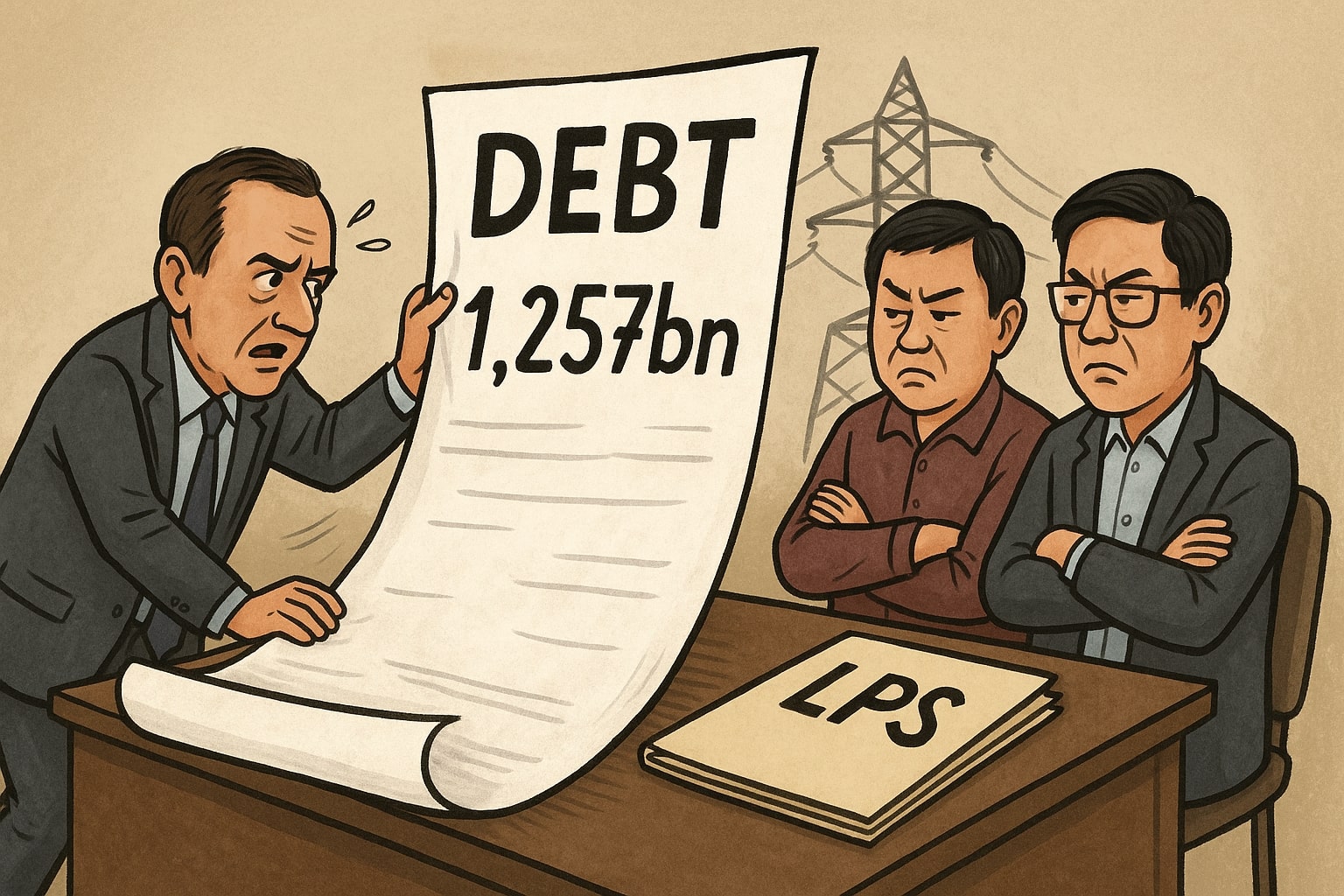In an effort to address the mounting economic pressure resulting from a staggering debt burden of Rs 1,257 billion, the government of Pakistan has initiated a plan aimed at restructuring and settling its obligations. However, this ambitious endeavor has hit a significant roadblock, primarily due to the unwillingness of Chinese Independent Power Producers (IPPs) to waive their liquidity payments (LPS). This unexpected hurdle has raised concerns over the viability of the government’s debt settlement strategy.
Background of the Debt Crisis
Pakistan’s economy has been grappling with a series of challenges, including inflation, currency devaluation, and a rising fiscal deficit, which have collectively exacerbated the country’s debt situation. The total debt has spiraled to unprecedented levels, prompting the government to formulate a comprehensive plan to mitigate the crisis. Central to this approach has been the negotiation with various stakeholders, including foreign investors and multilateral lending institutions, to find workable solutions.
Role of Chinese IPPs
Since the onset of the China-Pakistan Economic Corridor (CPEC), Chinese investments have played a pivotal role in enhancing Pakistan’s energy infrastructure. However, the reliance on these foreign entities has also complicated the nation’s financial landscape. Chinese IPPs, in particular, have been crucial in supplying electricity to the national grid, but the terms of their agreements have led to excessive liquidity payments, which the government now seeks to renegotiate.
These payments, characterized as LPS, are intended to compensate investors for any delays in tariff adjustments or other financial concessions. Presently, the government is attempting to persuade the Chinese IPPs to forgo these payments as part of its broader strategy to alleviate its debt obligations. Unfortunately, the Chinese developers have shown resistance to this proposal, citing contractual obligations and potential losses as primary concerns.
The Stalemate with Chinese IPPs
Despite ongoing discussions and negotiations between Pakistani authorities and Chinese stakeholders, the prospects of reaching a consensus appear grim. The Chinese IPPs argue that waiving the LPS could set a precedent that undermines the stability of their investments in the region. Given the substantial financial stakes involved, they remain steadfast in their demands, suggesting that any amendments to the existing contracts would require comprehensive evaluations and assurances of protection against future risks.
This impasse has plunged the government’s efforts into uncertainty, as the need for a swift resolution is critical for improving the economic landscape. The government initially hoped to complete the negotiations by the end of this fiscal year, but with the current delays, this timeline is increasingly in jeopardy.
Implications for the Economy
The inability to secure the Chinese IPPs’ agreement on waiving LPS not only jeopardizes the government’s immediate debt resolution plans but also signals broader implications for Pakistan’s economic future. If the ongoing negotiations remain unresolved, the government could face increased pressure on its foreign exchange reserves and a prolonged period of economic instability.
Moreover, the challenges in these negotiations risk sending a negative signal to other foreign investors who might observe the situation with skepticism. The perception of increasing risks associated with investments in Pakistan could deter potential foreign direct investment, further complicating the country’s financial recovery.
Government’s Response and Alternative Measures
In light of the stalled negotiations with the Chinese IPPs, the government is actively exploring other avenues to manage its fiscal situation. One option may involve engaging with other international stakeholders and creating new investment opportunities to attract funds and revitalize the economy.
Additionally, the government may also consider implementing structural reforms to improve the overall investment climate, such as increasing transparency in regulatory frameworks and enhancing protections for foreign investors’ rights. By addressing some of the systemic issues within the economy, the government aims to create a more stable environment for both current and prospective investors.
Furthermore, engaging in discussions with the International Monetary Fund (IMF) could yield new financial assistance options. By demonstrating a commitment to fiscal discipline and economic reform, Pakistan may secure vital financial support that alleviates pressure in the short term.
Conclusion
The government’s struggle with Chinese IPPs over LPS waivers epitomizes the complexities involved in restructuring Pakistan’s staggering Rs 1,257 billion debt. As negotiations remain stalled, it highlights the urgent need for a diversified approach to financial recovery. The fate of this ambitious debt settlement plan hangs in the balance, dependent on both domestic reforms and the collaborative efforts of foreign partners.
Moving forward, stakeholders must collectively recognize the importance of fostering a conducive environment for investment, ensuring the country can navigate its financial challenges effectively. The ability to adapt to this precarious situation will be a defining characteristic of the government’s strategy in reclaiming economic stability and advancing sustainable growth for the future. Read more


Leave a Reply